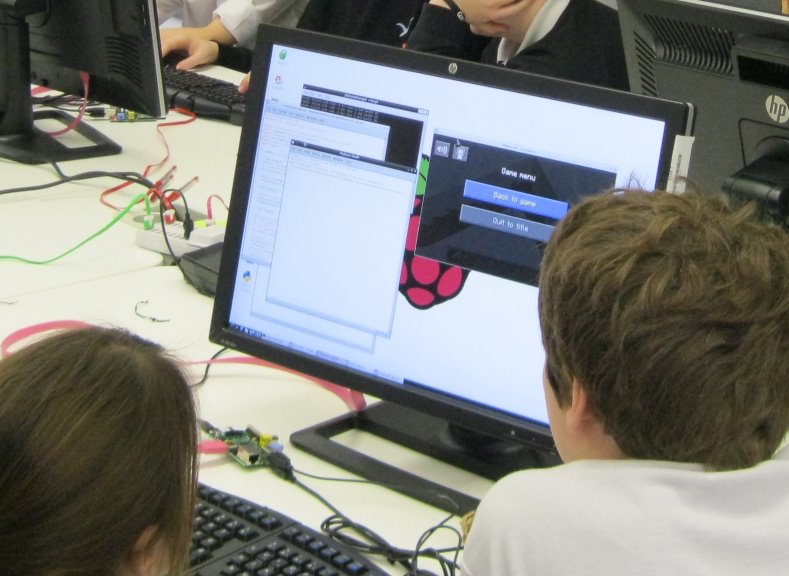Raspberry Pi in schools: discussion
This video of the closing panel discussion from last month’s Raspberry Jamboree has just appeared, and if you’re interested in applications of the Pi in schools, it’s well worth your time. If you want to find out more about the successful teaching of Computing in schools, this is a great place to start.
The OCR materials that are mentioned in the discussion are available for download for anyone: you don’t have to be a teacher. They’re only the start of a large planned scheme of work, and you’ll find materials for both pupils and teachers.
So watch the video, have a look through the worksheets, and let us know what you think. I’m meeting Alan O’Donohoe, who runs the Raspberry Jams, in…about ten minutes – if you have any questions for him please leave them in the comments, and I’ll pass them on!







10 comments
Davespice
VAT free Raspberry Pi sales through schools for educational purposes, excellent idea! Amen to that. I hope it happens.
Jason Birch
I know when I was at school, text books were hard to come by and we had to share sometimes three to one book. It is a shame if this is the case for a computer which is the cost of a text book. I hope the government starts taking this seriously like it says it is going to.
It is important that the whole world progresses technically, but it is more important to be at the forefront of the technology breaking edge.
You are all doing an outstanding job and making a difference.
Raspberry Pi Staff liz — post author
We very much agree about sharing a device – ideally, we’d like to see the kids owning the Pis themselves rather than the schools owning them (that sense of ownership is a really powerful thing, and sharing doesn’t work well); obviously, there are going to be limits to the practicality of that. We’ve very specifically ensured that the Pis from the Google grant are going to kids, not schools, for that reason.
Jim Manley
Isn’t the purpose of establishing a charity to do good things while keeping the grimy paws of bureaucrats out of the till so as to maximize the amount of good that can be done? If a charity has to pay VAT, you really ought to look into dumping some tea into a conveniently-located nearby harbo(u)r … trust me, you won’t miss your 4 o’clock tea for a small while (why do you think we invented Starbucks? ;) ).
More in the educational vein of the topic, just having my Pi boards lying about on the desk in the classrooms, not even powered up, invokes all manner of curiosity, and only the geekiest kids have even heard of them, much less seen one, let alone running where they can play with it. Its small size brings out the “cute” comment from the young ladies, and the guys want to know if “Call of Duty” can be played on it. So, I show them the Pi3D tank demo and their eyes get really big – there’s more than one way to skin a … carnivore! It’s not “CoD: Black Ops”, but it’s more than enough to stir their imagination.
I’ve been using an expansion of the Pi3D Earth demo into an orrery to allow students to zip around the solar system in our science classes. A further expansion to allow navigation around the Milky Way galaxy is under development by the kids as I teach them some software development. This forms the large-scale background 3-D graphics for the Pi-finity! STEM game system (yes, I’ve been working on it, slowly but surely) and we’re experimenting with various data distribution schemes for updating shared views among multiple player Pi systems. One thing we have discovered is that many distributed game systems are actually programmed pretty sloppily when it comes to shared data because modern systems have gobs of RAM and non-GPU CPU power – the protocols tend to be way too heavy for the Pi to handle updates from multiple participants. We’re paring things down to a more reasonable amount by starting with the fundamentals such as current 3-D location and movement, view direction, etc. As the Pi Doom demo shows, each Pi is quite capable of rendering 3-D scenes to a recognizable facsimile in response to a player’s live inputs.
Anyway, it doesn’t take much to snag the attention of students, and the 3-D graphics capability of the Pi has been seriously overlooked in this regard, IMHO (I’m starting to think about “Pi3D for Scratch” :) ). I’m writing an intro to 3-D graphics and Pi3D that will be published in the MagPi starting probably in Issue 13 (with other Pi-oriented 3-D graphics topics to come, such as OpenGL ES directly in Python, C, Java, etc.), as well as on-line tutorials oriented specifically toward middle and high school students. The vast majority of what’s available in documentation is oriented toward geeks who already know how to write code, and more pedestrian explanations are sorely needed.
Raspberry Pi Staff liz — post author
We can claim our VAT back; schools here don’t pay VAT either. The idea mooted was to sell Pis to consumers through schools ex VAT – and I have to say, I’m really not sure about the legality of that, even if the people buying them are buying them for learning purposes!
Patrick
Great story !!!
Jim Manley
Ah, of course, if you sell them through the school bureaucracy there’s all the attendant hate and discontent associated with convincing them to do so, and then they’re going to want to study to death how it should be administered, who gets the head-count credit (the Prime Directive for bureaucracies is to maximize head count – mission? What mission? :( ), how do they get their cut, etc.
One loophole might be if the Pii had the school’s logo somehow affixed to it (perhaps just make it the desktop wallpaper?). Then it becomes spiritware, and every school here sells ball caps, T-shirts, sweatshirts, pens, notebooks, etc., tax-free, although a primary purpose of these sales is to earn money for school events and niceties the taxpayers and/or the bureaucracy won’t support (like … Pii ;) ). I’ve had much dumber ideas, huh? Hey, no need to answer so fast in the affirmative – I’m standin’ right here! :D
Gary Newland
Good Morning,
I am an Outreach ICT Technician at a school in Hertfordshire that are trying to get their Raspberry Pi’s running on their school network. They would like to be able to connect to them via a VNC/Remote Desktop Application through the schools proxy however I cannot seem to figure it out! Some advice would be greatly appreciated (Software to use, how to connect to Raspberry Pi etc.)
Many Thanks
Ted Emch
I am a computer science teacher in Ann Arbor, Michigan, USA. I just discovered Raspberry Pi. Are there resources for a CS teacher who wants to “start up” a Raspberry Pi program in school?
Raspberry Pi Staff liz — post author
Come to the forums (link at the top of the page) – there’s a whole section dedicated to education there, and you’ll find lots of fellow teachers who can help you.